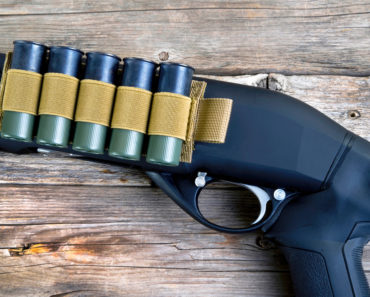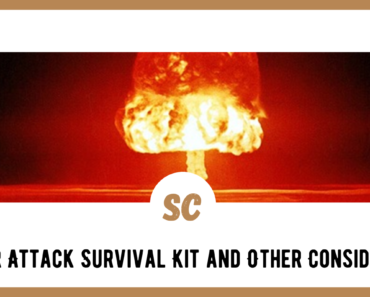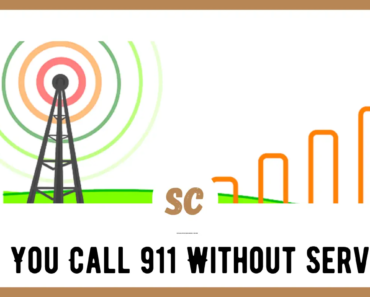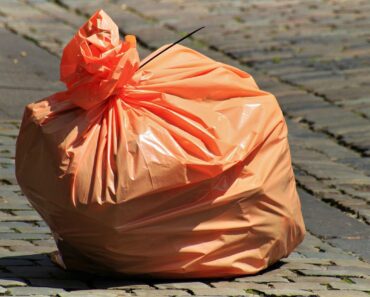The chance of injury always seems to increase in an emergency situation. Part of that is from the emergency itself and part is from us being forced to do manual tasks that we’re not accustomed to. I mean, how many of us regularly split wood for the fire? Using an axe, or more correctly a maul, isn’t exactly the safest bit of woodworking you can do. For that matter, neither is using a chainsaw.
Such tasks could easily become commonplace in a post-disaster world, literally forcing all of us to take risks with our health. While people before us did that for centuries, the difference is that it was a normal part of their life. While I’m sure there were injuries, I expect that the percentage of injuries was lower, due to how commonplace that sort of work was. On the other hand, such accidents could be extremely serious to people who lived in a world with more primitive medicine than we have available to us today.
Medical facilities will likely become overrun during such a time, due to the high number of people who will be injured, either by the disaster itself or trying to do thing they’re not accustomed to. But that’s not the worst of it, as it is likely that hospitals will have trouble getting supplies and may not have electricity. Without the myriad of supplies that those hospitals use, we may be facing a medical situation that is similar to what our great-grandparents lived though in the 1800s.
One thing is certain, we’re going to need to be ready to care for family members who are sick or injured ourselves. Even if the hospitals are still operational, there probably won’t be ambulances to rush injured people to the hospital. We’ll have to stabilize anyone who is wounded, stop the bleeding and protect them from infection, before transporting them to the hospital.
That means getting some first-aid training and stockpiling basic first-aid supplies. I’m not talking about a $19.95 first-aid kit that you can buy at the local pharmacy; I’m talking about what it known as a “trauma kit.” Those are designed to treat much more serious injuries. One thing to keep in mind with any commercial trauma kit, it that it was probably built with the idea of treating only one injury. You’re going to want to stock additional first-aid supplies to replenish it as well.
But what are you going to do, once those supplies run out or if you are separated from them? We need to have some ideas about what we can use for first-aid, when we don’t have the modern supplies to use. [1]
Bandages
The most obvious first-aid supply needed is bandages. A bandage serves two purposes: protecting the wound from dirt and absorbing blood, so as to promote clotting. Today, we use gauze for bandages; but that will probably become scarce in a post-disaster time.
- Sanitary napkins – Women’s sanitary napkins are ideal bandages. They are absorbent, sterile and designed to absorb blood. They’re also a lot cheaper than bandages, so you might want to use them as part of your first-aid kit, not just as a backup.
- Tampons – While smaller than sanitary napkins, tampons are also sterile and designed to absorb blood. They are ideal when a hole needs to be plugged, such as one made by a bullet. Just be sure to remove the tampon, once it has done its job.
- Rags – Sterilized cloths or rags were the standard bandage back in the 1800s. They can be sterilized by immersion in boiling water. Ideally, you want to do this ahead of time, so that they can dry out before use. But even wet cloths can be used.
- Moss – Dry moss absorbs blood well, making it a good emergency bandage, that was used extensively in the Old West.
- Cobwebs – This one’s a bit surprising, but cobwebs make an excellent bandage, if you can gather enough of them. They are absorbent, will stick to the patient’s skin and are very strong.
Adhesive Tape
Generally speaking, bandages have to be held in place with adhesive tape. But few people have much medical tape on hand. Fortunately, for the most part, tape is tape, so although transparent “Scotch” tape isn’t going to do the job, there are other options we can use.
- Duct tape – Probably the best alternative to medical tape. The biggest problem is going to be getting it off. Don’t overdo it, as pulling on the tape, even if it isn’t touching the skin, could be painful to the patient.
- Packing tape – While not as strong as duct tape, clear packing tape will work well, especially if you are able to go all the way around a limb and have the tape connect back to itself. It will stick to itself much better than it will stick to skin.
- Clear plastic wrap – The clear plastic wrap that clings to itself makes a great cohesive tape for holding bandages in place. Actually, for abdominal wounds, it’s better than anything else, as it can be wrapped around the entire body.
- String, ribbon, elastic – If nothing else is available, then string, ribbon or elastic can be tied around the bandage to hold it in place. This is tricky, as some pressure is required, to ensure that the bandage doesn’t slip off.
Sutures
For serious injuries, stitches may be required. Now, I’ll have to admit, I’ve never sutured a wound and I hope I never have to. But in the case of an open wound, it might become necessary. Here are a couple of ideas in such a situation.
- Tape – Tape has been used for several decades as a substitute for sutures. Typically, the tape is pierced along the wound line, allowing air in to help with clotting. This is tricky to do with normal tape, such as packing tape, but it is possible. Make sure the skin surface is clean and dry, before trying to apply the tape.
- Superglue – One of the original purposes for which superglue was invented was for medical purposes, specifically for surgery. As such, it can just as well be used for holding a wound closed.
- Fishing line – If you have to actually do stitches, then a good material to use is lightweight fishing line. Don’t opt for a heavyweight line, as it is less flexible. Use clean, new line and sterilize it before using it.
Antibacterial Cleaner and Ointment
Wounds need to be cleaned out, to remove debris, and some sort of antibacterial cleanser and/or ointment applied. This is done to kill bacteria and help prevent infection. That means, we need something that work to kill the bacteria or at least flush it out of the wound.
- Clean water – While water can’t kill bacteria, it can flush it out of a wound. Water that is clean enough to drink is good enough for this. While that should be followed by some sort of antibacterial, the water is a good start.
- Booze – Alcohol is alcohol, regardless of what it was created for. You’re better off using hard liquor, which has a higher percentage of alcohol, than wine or beer; but if you don’t have anything else available, those are better than nothing.
- Homemade antibacterial ointment – There are a number of recipes online for homemade antibacterial ointments, mostly herbal concoctions. As long as they have plants in them that are known for their antibacterial properties, they will work.
Homemade Antibacterial Ointment
Make a mixture of beeswax and coconut oil, melting it in a double boiler. Once thoroughly melted and mixed together, transfer to a blender and add witch hazel, lavender oil, and tea tree oil. Blend for 30 seconds. If a blender is not available or there is no electricity to run it, mix in a bowl with a whisk.
Dealing with Broken Bones
Broken bones are challenging in the best of circumstances. Unless we’re talking about really severe compound fractures, all that doctors can do it to make sure the ends of the bones are mated up correctly and then put a cast on the limb, immobilizing the joints above and below the fracture, so that the bones won’t move in relationship to each other.
It is possible to set a fracture, without all the fancy equipment that doctors use. I’m no expert on this, but pulling on the limb, from above and below the break, will allow the bone ends to move, without grating on each other. They can then be set in place. A splint can be applied, rather than a cast, immobilizing the joints above and below the break. Keep it immobile for at least six weeks, so that the bones can begin to grow back together and put the patient on light duty, even when they start moving around again.
Pain Relievers
Anyone who has ever suffered a major injury knows the importance of pain relievers in the heling process. Hopefully you have a good stock of Aspirin, Ibuprofen and Acetaminophen in the house. But what do you do when they run out? You’ll have to use natural pain relievers.
This is one place where alcoholic beverages can be extremely useful in survival. While drinking can affect us in many more ways than just eliminating pain, it can be used to reduce pain… or rather, our recognition of the pain being there. Just don’t trust that person to do much of anything else, while they are drinking.
There are also a number of different herbs, such as turmeric, which are lauded as natural pain relievers. I am not an expert on these, so I won’t make any specific recommendations. However, a little bit of quick research online, will result in a treasure trove of information. Whatever you choose to use, do some personal testing as well, just to make sure that it will work for you.
[1] Please note that I am not a medical professional. The information I have provided is readily available from a variety of online sources.




























